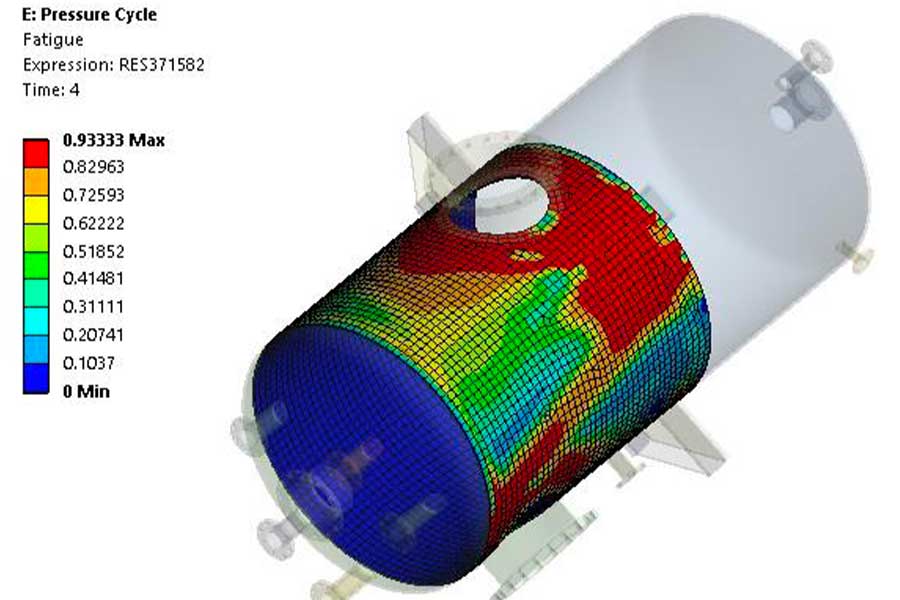This website uses cookies so that we can provide you with the best user experience possible. Cookie information is stored in your browser and performs functions such as recognising you when you return to our website and helping our team to understand which sections of the website you find most interesting and useful.

Particle physics simulation
The particle physics simulation serves as a guide in the vast exploratory field of particle physics. By traversing the maze of interactions between particles and matter, it provides scientists and engineers with a sharp and distinct perception of phenomena that are often imperceptible to the human eye. It’s a field which, although it stems directly from the basic sciences, has tangible repercussions in many industrial sectors. Whether in the medical field, nuclear energy, microelectronics or even aerospace, the ability to analyze and predict particle behavior can make the difference between success and failure.

Why is particle physics simulation essential?
The study of particle interaction has major implications in many fields:
Particle physics simulations play a key role in radiotherapy, modeling the production of medical radioisotopes for the precise localization of tumors in the human body. In a tumor treatment phase, this precision will enable precise dosing of radiation and radiative particles irradiating tissue, precisely targeting tumors while minimizing damage to surrounding healthy tissue.
We welcome the growing use of “Theragnostics”, injectable radioisotopes that combine tumor localization with highly selective destruction, further limiting the undesirable effects of these treatments.
In nuclear reactors, these simulations enable us to predict the trajectory and interaction of neutrons, optimizing chain reaction and energy production while guaranteeing safety.
Why is Particle Physics Simulation Essential?
Particle physics simulations require a high level of expertise, exploited through sophisticated software. These programs incorporate advanced algorithms to accurately model particle-matter interactions and the trajectories they take in different media. These numerical tools translate the complex equations of particle physics into comprehensible visualizations, helping researchers and engineers to anticipate, analyze and optimize the phenomena associated with particle dynamics.
MCNP is the benchmark for Monte Carlo simulation. This is a stochastic method for evaluating parameters by randomly following particle trajectories through complex environments. By faithfully reproducing every possible interaction, MCNP is able to deliver detailed and accurate results, making it invaluable for applications such as nuclear research, medicine and radiation protection.
What are the practical applications?
The simulation of particle physics in radiotherapy is vital to the success of cancer treatments. Using precise models of the patient and medical equipment, simulations enable oncologists to plan the required radiation dose. This ensures that the tumor is targeted effectively, while minimizing exposure of surrounding healthy tissue, reducing side effects and maximizing treatment efficacy.
In the world of particle physics research, high-energy collisions generate a multitude of different particles. Simulations are crucial to anticipate how these particles will pass through and interact with the detectors. They guide the design of precise detectors that can identify and analyze the particles produced, paving the way for new scientific discoveries.
In the nuclear industry, the protection of workers and the environment is paramount. Particle physics simulations provide essential information on the propagation of radiation through different materials and in different configurations. This enables the design of optimized barriers and shields, ensuring that radiation remains within safe limits and that any risk to health is minimized.
Managing radioactive waste poses serious challenges. Simulations allow us to study how radioactive particles propagate through storage containers, soil and other media. This information is crucial to the design of safe storage facilities, ensuring long-term isolation of waste and effective protection of the environment.
In space, cosmic particles are a major concern for the safety of equipment and astronauts. Particle physics simulations enable us to analyze how these particles interact with space structures, instruments and protection systems. This guides the design of shielding materials and systems, guaranteeing the success and safety of space missions.
As electronic components become smaller and more complex, their interaction with particles has become a major area of interest. Simulations help predict how particles such as neutrons or protons affect integrated circuits. Energetic particles from the earth’s core and from outer space, with no noticeable effect on “macroscopic” components, become predominant in electronic circuits involving a few atoms and a few electrons, individually very sensitive to these telluric or spatial disturbances.
This knowledge is essential for developing electronic devices that are both high-performance and resistant to particle disturbance. In short, particle physics simulation is a pillar of research and innovation in many sectors. Thanks to a combination of advanced software and a deep understanding of physics, experts can predict, analyze and optimize particle behavior in a variety of applications, leading to significant advances in science and technology.



